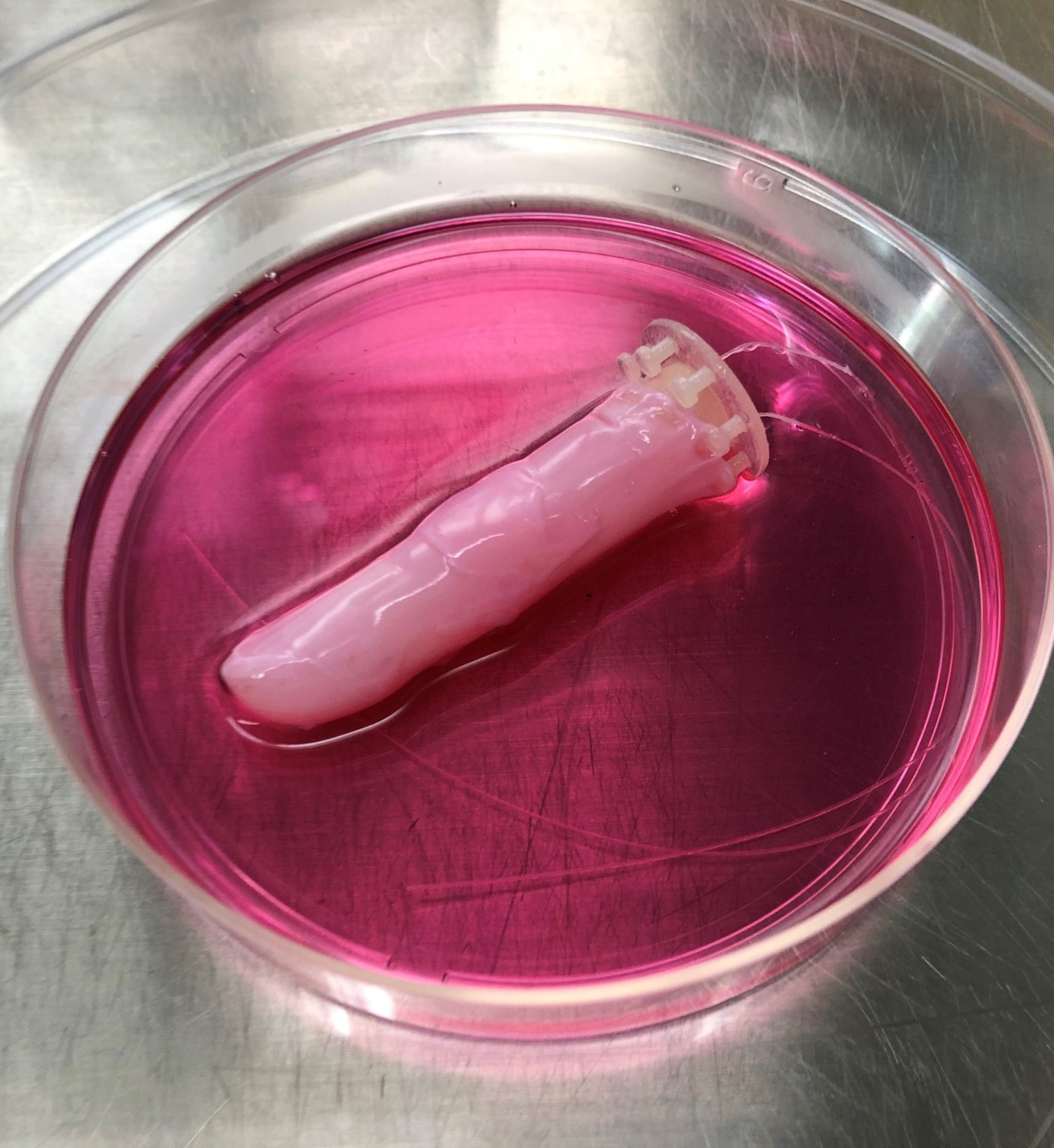Scientists in Japan have developed living human skin that can be applied to robots, based on a solution of collagen and human dermal fibroblasts.
While still in the experimental stages and not able to survive long term, they say it’s the first step forward from using artificial silicone skin on robots that may mimic human appearance, but lacks delicate textures like wrinkles and lacks skin-specific functions.
Describing their work in the journal Cell Press they say they applied the skin model to a three-joint robotic finger with the initial culture layer acting like an undercoat for the next layer of cells – human epidermal keratinocytes – to stick to.
To craft the skin, the team first submerged the robotic finger in a cylinder filled with the mixture of collagen and fibroblast, which shrank and tightly conformed to the finger.
The crafted skin had enough strength and elasticity to bear the dynamic movements as the robotic finger curled and stretched. The outermost layer was thick enough to be lifted with tweezers and repelled water, which provides various advantages in performing specific tasks like handling electrostatically charged tiny polystyrene foam, a material often used in packaging.
 Furthermore, inspired by the medical treatment of deeply burned skin using grafted hydrogels, the Tokyo team demonstrated ‘wound repair’ of the dermis equivalent covering the robotic finger by culturing the wounded tissue grafted with a collagen sheet.
Furthermore, inspired by the medical treatment of deeply burned skin using grafted hydrogels, the Tokyo team demonstrated ‘wound repair’ of the dermis equivalent covering the robotic finger by culturing the wounded tissue grafted with a collagen sheet.
“The finger looks slightly ‘sweaty’ straight out of the culture medium,” said first author Shoji Takeuchi, a professor at the at University of Tokyo’s Department of Mechano-Informatics.
“We were surprised by how well the skin tissue conforms to the robot’s surface,” he added.
However he emphasised that the developed skin was much weaker than natural skin and could not survive long without constant nutrient supply and waste removal.
Nevertheless, they plan to to address those issues and incorporate more sophisticated functional structures within the skin, such as sensory neurons, hair follicles, nails, and sweat glands.
“Taken together, these findings show the potential of a paradigm shift from traditional robotics to the new scheme of biohybrid robotics that leverage the advantages of both living materials and artificial materials,” they said.